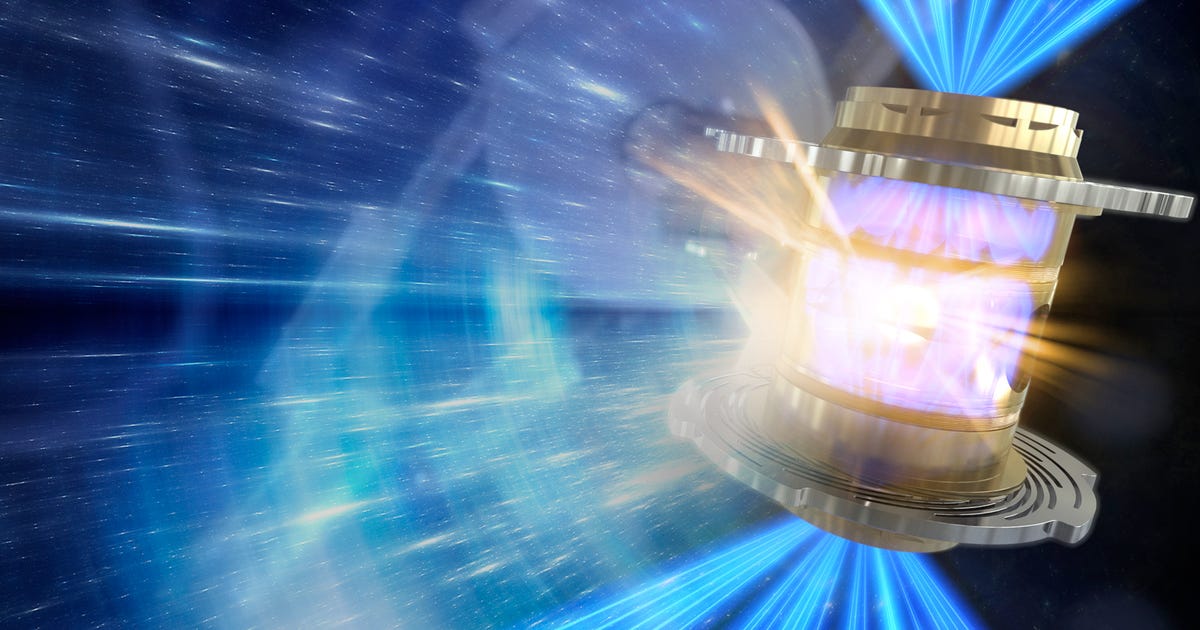Scientists at Lawrence Livermore National Laboratory may have achieved a remarkable new high point for fusion reactions, generating more energy than was pumped in during a recent experiment, according to a report by the Financial Times.
The publication suggests scientists “with knowledge of preliminary results from a recent experiment” have discussed the result and analysis is ongoing. A major announcement is scheduled to take place at LLNL on Tuesday, Dec. 13. It’s expected to be livestreamed by the Department of Energy at approximately 7 a.m. PT.
The National Ignition Facility operates an “inertial confinement fusion” experiment which sees almost 200 lasers fired directly at a tiny capsule of hydrogen. According to Nathan Garland, a physicist at Griffith University in Australia, the lasers create a plasma around the capsule which eventually starts an implosion — it’s these conditions which allow for fusion reactions to take place.
Fusion is the reaction that powers our sun and it works by smashing two heavy atoms together. This requires extreme pressure and extreme heat but trying to recreate the conditions in a lab is “super difficult,” noted Garland.
The energy released by fusing the two atoms together is massive and, importantly, releases no carbon. Unlike fission — splitting atoms — used in nuclear power plants, fusion also leaves behind no radioactive waste and there’s no risk of meltdown, either. In short, if we could harness fusion power, it would revolutionize energy, allowing us to generate clean power without pumping greenhouse gases into the atmosphere.
If the FT report and chatter on social media is correct, scientists at LLNL could have achieved “fusion energy gain” which is denoted by the letter Q. In a fusion experiment, if Q > 1, then we’re on our way to a bona fide energy breakthrough, one that scientists have long been dreaming of reaching. “It is a big deal for sure, if true,” Garland said.
But, as with all science, it’s good to be cautious and not overhype results yet to be fully analyzed. We have been here before, after all. In 2013, reports swirled the NIF had achieved this exact feat. It wasn’t the case.
In more recent times, though, NIF has taken big strides toward achieving the goal. In August 2021, researchers reported they had, for a brief moment, re-created the power of the sun in a self-sustaining reaction. That’s a good pedigree and one that makes us here at CNET Science feel a little more confident in the rumors.
A spokesperson for LLNL told CNET “our analysis is still ongoing, so we’re unable to provide details or confirmation at this time” and provided a link to the media advisory — which, in all caps, suggests a “MAJOR SCIENTIFIC BREAKTHROUGH.”
The result won’t mean that we suddenly have an endless supply of energy. It’s likely the reaction that took place at NIF lasted for just a fraction of a second or even less. But this is the first step in a journey toward fusion energy as a viable, serious technology to power our world. It provides a proof of concept that fusion experiments like this can reach Q > 1.
So while we’re always cautious to throw around the word “breakthrough” when reporting on cutting-edge science — especially in the realm of fusion energy — it does feel like it might be justified here. We’ll have to wait and see.

